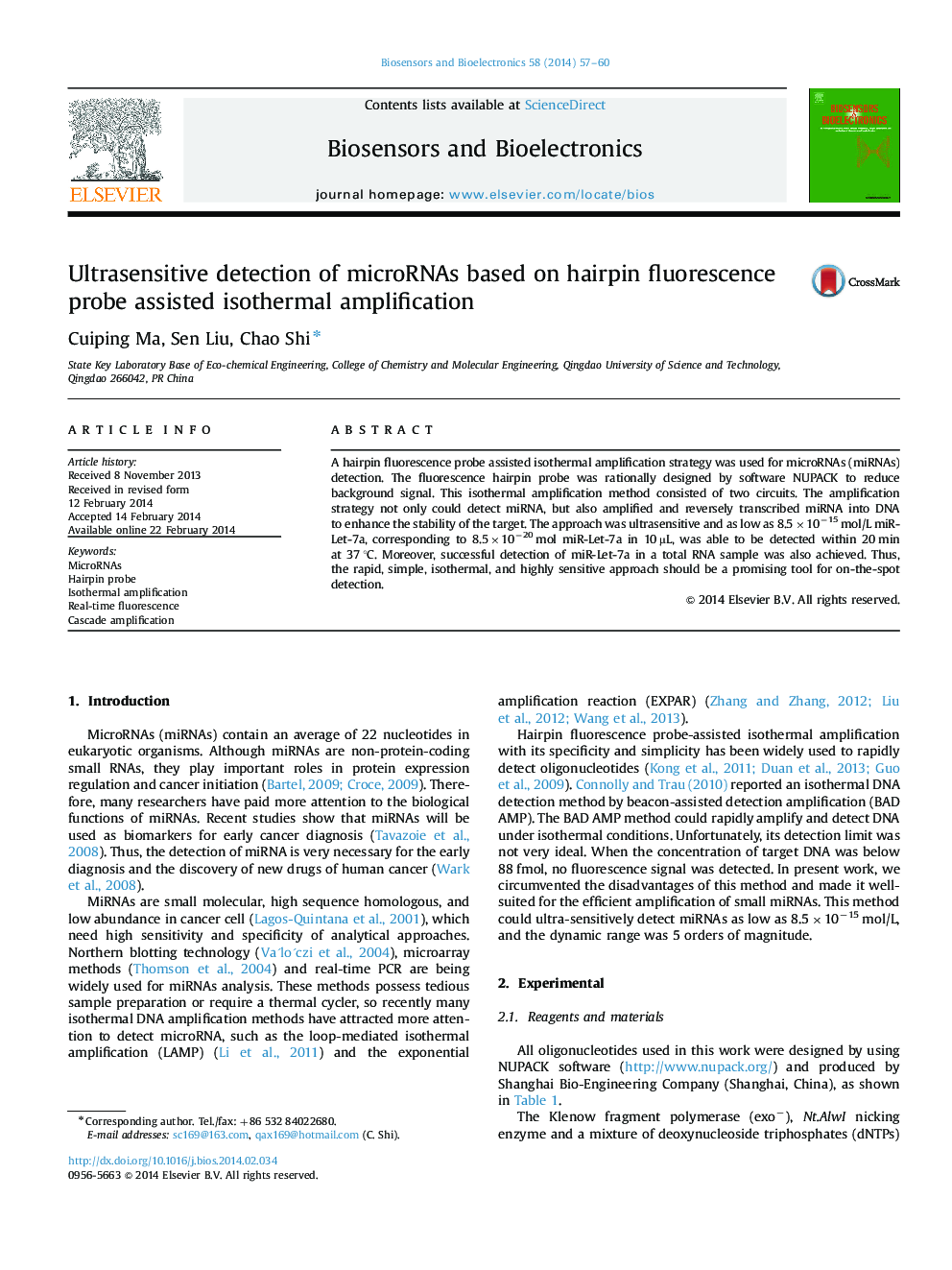| Article ID | Journal | Published Year | Pages | File Type |
|---|---|---|---|---|
| 7233480 | Biosensors and Bioelectronics | 2014 | 4 Pages |
Abstract
A hairpin fluorescence probe assisted isothermal amplification strategy was used for microRNAs (miRNAs) detection. The fluorescence hairpin probe was rationally designed by software NUPACK to reduce background signal. This isothermal amplification method consisted of two circuits. The amplification strategy not only could detect miRNA, but also amplified and reversely transcribed miRNA into DNA to enhance the stability of the target. The approach was ultrasensitive and as low as 8.5Ã10â15 mol/L miR-Let-7a, corresponding to 8.5Ã10â20 mol miR-Let-7a in 10 µL, was able to be detected within 20 min at 37 °C. Moreover, successful detection of miR-Let-7a in a total RNA sample was also achieved. Thus, the rapid, simple, isothermal, and highly sensitive approach should be a promising tool for on-the-spot detection.
Related Topics
Physical Sciences and Engineering
Chemistry
Analytical Chemistry
Authors
Cuiping Ma, Sen Liu, Chao Shi,
